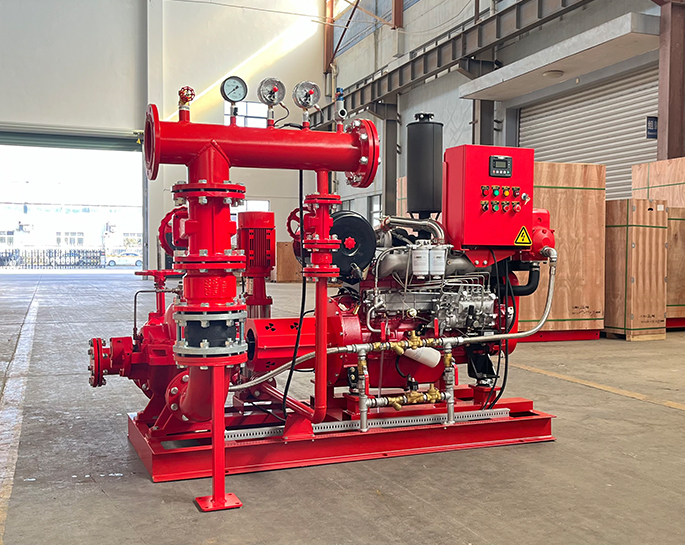How to Select the Best Fire Pump for Your High-Risk Facility?
Selecting the best fire pump for a high-risk facility requires a detailed understanding of the facility's fire protection needs, as well as the specific requirements set by fire safety regulations. Here are the key factors to consider when choosing a fire pump for a high-risk environment:
1. Compliance with Standards (NFPA 20 & UL/FM Certification)
- NFPA 20: The fire pump system must comply with NFPA 20, which defines the installation of stationary pumps for fire protection.
- UL/FM Certification: Ensure the pump is UL-listed and FM-approved for optimal safety and reliability.
2. Type of Fire Pump
Different fire pumps are suited to different types of buildings and risks. Choose the appropriate type based on your facility:
- Electric Fire Pumps: Reliable, easy to maintain, and ideal for facilities with stable electricity.
- Diesel Engine Fire Pumps: Suitable for areas where electricity may be unreliable or prone to outages.
- Jockey Pumps: Used to maintain pressure in fire sprinkler systems and prevent frequent start-ups of main fire pumps.
3. Assess the Facility's Water Supply
- Water Source: Analyze the available water supply. Is it from a municipal source, a reservoir, or a dedicated water storage system?
- Flow Rate & Pressure Requirements: Calculate the water demand based on the size and type of the facility. High-risk facilities typically require higher flow rates and sustained pressure for extended periods.
4. Flow Rate and Pressure Needs
- The pump's flow rate and pressure must meet the facility's fire protection needs, based on the fire hazard risk. High-risk facilities often require large volumes of water and high-pressure systems, which are determined during the hydraulic analysis of the building.
5. Size and Layout of the Facility
- Large, Multi-Story Buildings: Multi-story or expansive facilities may need more powerful pumps with high flow rates.
- Hazardous Materials Storage: Facilities storing flammable or hazardous materials may need pumps with higher pressure capabilities for quick fire suppression.
6. Pump Capacity & Redundancy
- Consider the capacity of the fire pump in relation to the building size and fire hazard classification.
- Backup Systems: For high-risk environments, consider having a redundant fire pump or dual-pump system to ensure continuous operation even if one pump fails.
7. Pump Placement and Environmental Considerations
- Indoor vs. Outdoor: Determine whether the pump will be housed indoors or outdoors and account for climate factors.
- Environmental Hazards: High-risk facilities often need pumps that can withstand harsh conditions, such as dust, high temperatures, or corrosive atmospheres.
8. Maintenance and Accessibility
- Ensure the fire pump you select is easy to maintain and that replacement parts are readily available. This is especially important in high-risk environments where downtime could be catastrophic.
9. Integration with Existing Systems
- Ensure the fire pump is compatible with existing fire protection systems such as sprinklers, hydrants, or foam systems.
10. Consult a Fire Protection Engineer
- Given the complexities of high-risk environments, it’s wise to consult a fire protection engineer or a certified professional who can evaluate your facility's specific requirements.
Conclusion
For high-risk facilities, selecting the right fire pump involves balancing compliance, performance, and reliability. Ensure the pump meets NFPA 20 standards, has the necessary UL/FM certification, and is properly sized to handle the water supply, pressure, and flow rate demands of your facility.
If you're looking for tailored recommendations, feel free to reach out. We can assist you in choosing the ideal fire pump package for your specific needs.







